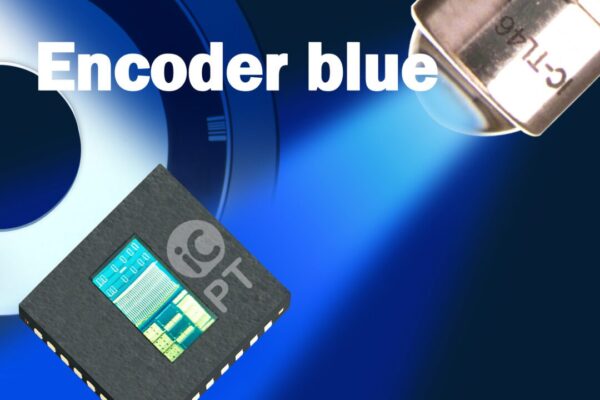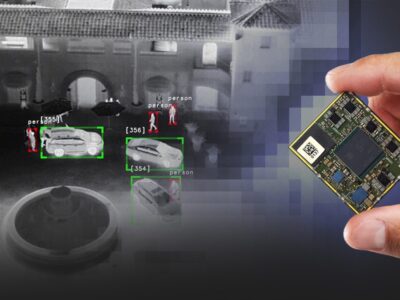
Blue-light optical encoder ICs boost resolution and performance
The shorter wavelength and penetration of blue-light photons can improve the resolution, signal amplitude, harmonic distortion, and jitter performance of incremental and absolute encoders, the company says. Blue light causes less diffraction at the same slot width compared to higher wavelengths, thus resulting in sharper imaging.
Modern semiconductor processes provide small, shallow structures which can take advantage of the shorter penetration of blue light to improve efficiency. Smaller structures allow an interlaced photodiode layout which produces sine and cosine encoder signals with lower offset. In addition, a high fillfactor for the photosensitive areas is achieved by an equivalent geometrical transformation.
Long term temperature-stable blue LEDs are available, iC-Haus continues, which outperform the IR and red LEDs used in encoders so far, because they offer higher light yield and efficiency at lower cost. Optical position sensors benefit as a result of the technological progress of both LED and CMOS technology. iC-Haus has optimised its incremental scanners in its high resolution iCPT H Series for blue light, undet the platform name Encoder blue.
The encoder chips combine optimised scanning and signal interpolation in the smallest available space: a flat 5 x 5 mm optoQFN package with a plane window. Due to the phased-array structure of the opto-chips, a minimal scanning area of only 1.9 x 3.1 mm is sufficient to generate 10,000 pulses per revolution using a code disc of 26mm diameter, for example. The blue light increases the contrast with lower noise and the improved efficiency reduces the current consumption within the optical system.
The devices generate low-jitter encoder quadrature signals with index via 4-mA push-pull drivers in single, double and four-fold resolution for precise motor regulation. Conventional Hall sensors used for motor commutation have been replaced by the integration of three additional scanning tracks. Here, the code disc determines the required commutation signal and can be adapted to suit the required motor pole count.
Index gating as well as interpolation is selectable by pin. Output frequencies of up to 1.6 MHz are permitted, enabling motor speed control at up to 10,000 rpm with 10,000 pulses per revolution. Analogue test signals can be activated for ease of alignment and test of the complete encoder assembly.
The small scanning area and high sensitivity both help to reduce the power requirements of the encoder LED – an operating current of a few milliamps is sufficient. This improves the LED’s lifetime, especially at high operating temperatures. The iC-PT H devices control the LED and compensate for ageing and temperature effects.
iC-Haus provides evaluation boards for the scanners together with plastic code discs and snap-on blue LEDs to allow evaluation of the signal quality benefits in a direct comparison with IR illumination. The higher forward voltage of blue LEDs and the integrity of the materials used within the encoder have to be considered at system design.
IC-Haus; www.ichaus.com/encoder-blue
 If you enjoyed this article, you will like the following ones: don't miss them by subscribing to :
eeNews on Google News
If you enjoyed this article, you will like the following ones: don't miss them by subscribing to :
eeNews on Google News




